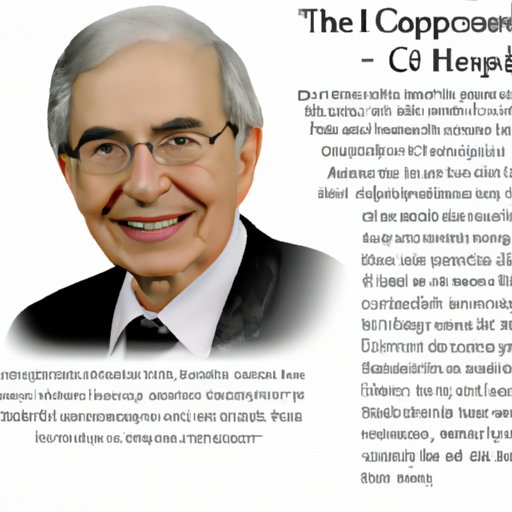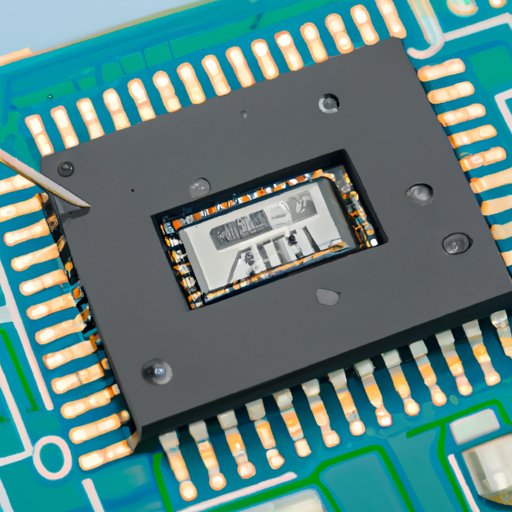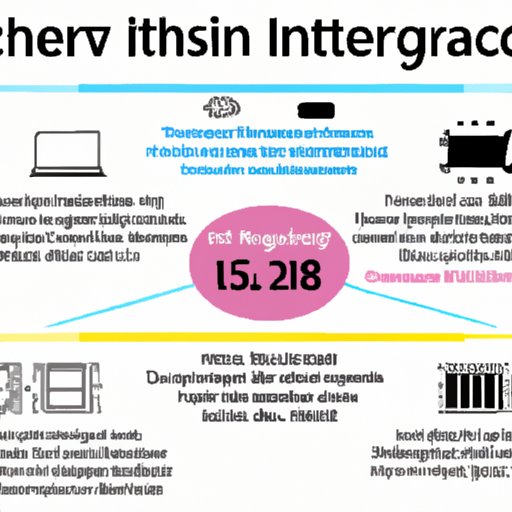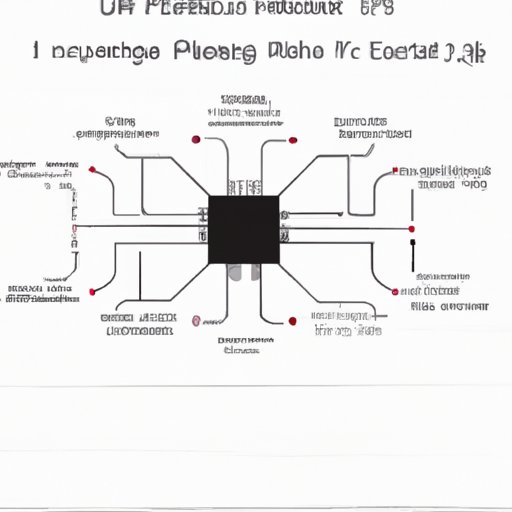Introduction
The integrated circuit or “chip” is one of the most important inventions of the past century, revolutionizing computing technology as we know it. But who invented the integrated chip? This article seeks to answer this question, exploring the life and achievements of Jack Kilby, the man who developed the first integrated chip in 1958.

Biographical Overview of the Inventor of the Integrated Chip
Jack Kilby was born in Missouri in 1923. He studied electrical engineering at the University of Illinois before joining the Army Signal Corps during World War II. After the war, he continued his studies at the University of Wisconsin-Madison and then went to work for Centralab, a Milwaukee-based electronics company. In 1958, while working at Texas Instruments, Kilby created the first integrated circuit, or “chip”.
Kilby won the Nobel Prize in Physics in 2000 for his invention of the integrated circuit. He has been credited with transforming the way electronic devices are made and paving the way for the development of modern computers, cell phones, and other technologies.
Exploring the History and Development of the Integrated Chip
The idea of the integrated circuit had been around since the early 1900s, but it wasn’t until Kilby’s breakthrough that it became a reality. In 1957, Kilby was tasked with finding a way to reduce the size and complexity of electronic circuits. He proposed creating a single chip that could combine all of the components of a circuit onto one piece of material, which would reduce the number of parts needed and make it easier to manufacture.
Kilby developed the first integrated chip in 1958, using germanium as the semiconductor material. This small chip contained all of the components of a circuit, including transistors, resistors, and capacitors. It was much smaller than traditional circuits, allowing for more compact electronic devices.

Impact of the Integrated Chip on Technology
The invention of the integrated chip had a huge impact on the field of electronics. The chip allowed for the development of much smaller and more powerful electronic devices. It also enabled the creation of computers and other gadgets that could perform complex tasks quickly and efficiently.
Today, integrated circuits are used in nearly every type of electronic device, from cell phones and computers to medical equipment and satellites. They are responsible for the rapid advancement of technology over the past few decades.
Interview with the Inventor of the Integrated Chip
In an interview with the Innovation & Tech Today magazine, Jack Kilby discussed his experience inventing the integrated chip:
“I was looking for a way to reduce the complexity of electronic circuits. I knew that if I could combine all of the components into one piece of material, it would make them much easier to manufacture. So I set out to develop a chip that could do this. After months of hard work, I finally succeeded in creating the first integrated circuit.”

A Timeline of the Invention of the Integrated Chip
1947: John Bardeen and Walter Brattain invent the transistor, laying the foundation for the development of the integrated circuit.
1957: Jack Kilby begins working on an integrated circuit at Texas Instruments.
1958: Kilby develops the first integrated circuit, using germanium as the semiconductor material.
1959: Robert Noyce of Fairchild Semiconductor creates the first commercial integrated circuit.
1968: Intel introduces the first microprocessor.
1971: Intel releases the world’s first single-chip microprocessor.
The Science Behind the Integrated Chip
An integrated chip is a tiny electronic device consisting of millions of transistors, resistors, and capacitors etched onto a single piece of semiconductor material, such as silicon. The transistors act as switches, controlling the flow of electricity through the chip. The resistors and capacitors store energy, allowing the chip to process information.
The chip is designed to perform a specific task, such as calculating numbers or playing music. To do this, the chip must be programmed with instructions. These instructions tell the chip how to process data and carry out tasks. Once the chip is programmed, it can be used to perform a variety of functions.
Conclusion
In conclusion, Jack Kilby was the inventor of the integrated chip. His invention revolutionized the field of electronics, paving the way for the development of modern technology. The integrated chip has had a huge impact on the world, allowing for the creation of faster and more powerful electronic devices. Thanks to Kilby’s invention, these devices have become an integral part of our lives.
(Note: Is this article not meeting your expectations? Do you have knowledge or insights to share? Unlock new opportunities and expand your reach by joining our authors team. Click Registration to join us and share your expertise with our readers.)
